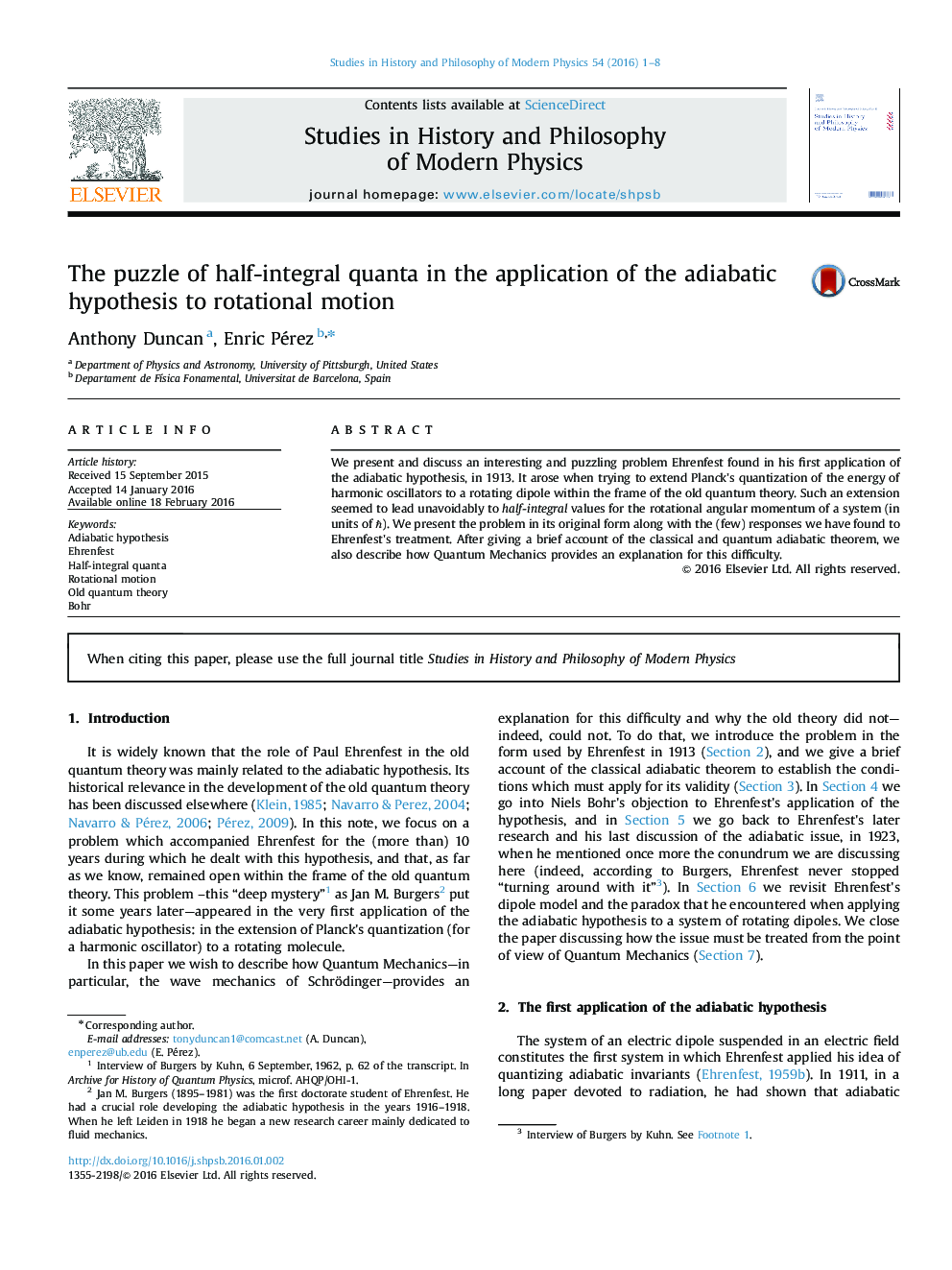| Article ID | Journal | Published Year | Pages | File Type |
|---|---|---|---|---|
| 1161094 | Studies in History and Philosophy of Science Part B: Studies in History and Philosophy of Modern Physics | 2016 | 8 Pages |
•Description of a problem which arose when first applying the adiabatic hypothesis.•Arguing that Ehrenfest׳s (and Bohr׳s) explanation is not correct.•Showing how Quantum Mechanics provides an explanation.•An historical account of Bohr׳s response to this problem.
We present and discuss an interesting and puzzling problem Ehrenfest found in his first application of the adiabatic hypothesis, in 1913. It arose when trying to extend Planck׳s quantization of the energy of harmonic oscillators to a rotating dipole within the frame of the old quantum theory. Such an extension seemed to lead unavoidably to half-integral values for the rotational angular momentum of a system (in units of ℏ). We present the problem in its original form along with the (few) responses we have found to Ehrenfest׳s treatment. After giving a brief account of the classical and quantum adiabatic theorem, we also describe how Quantum Mechanics provides an explanation for this difficulty.
